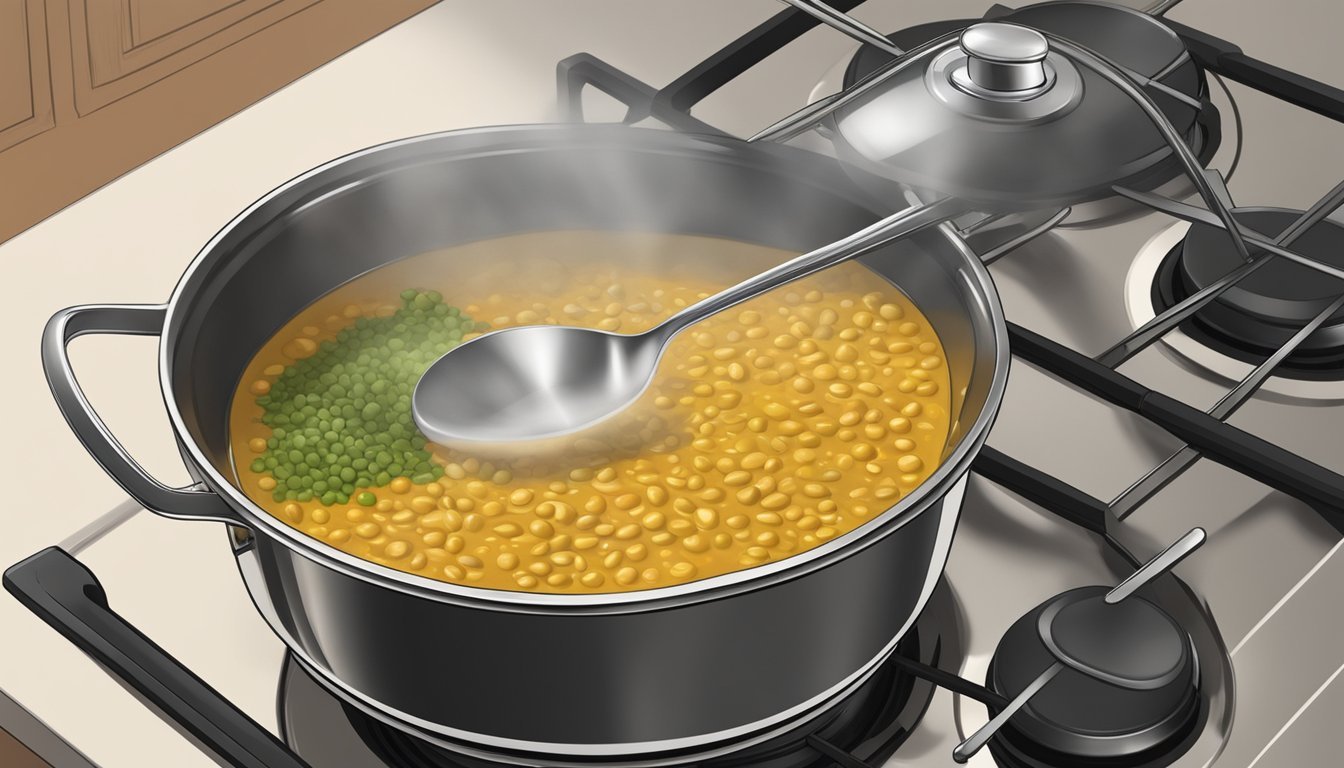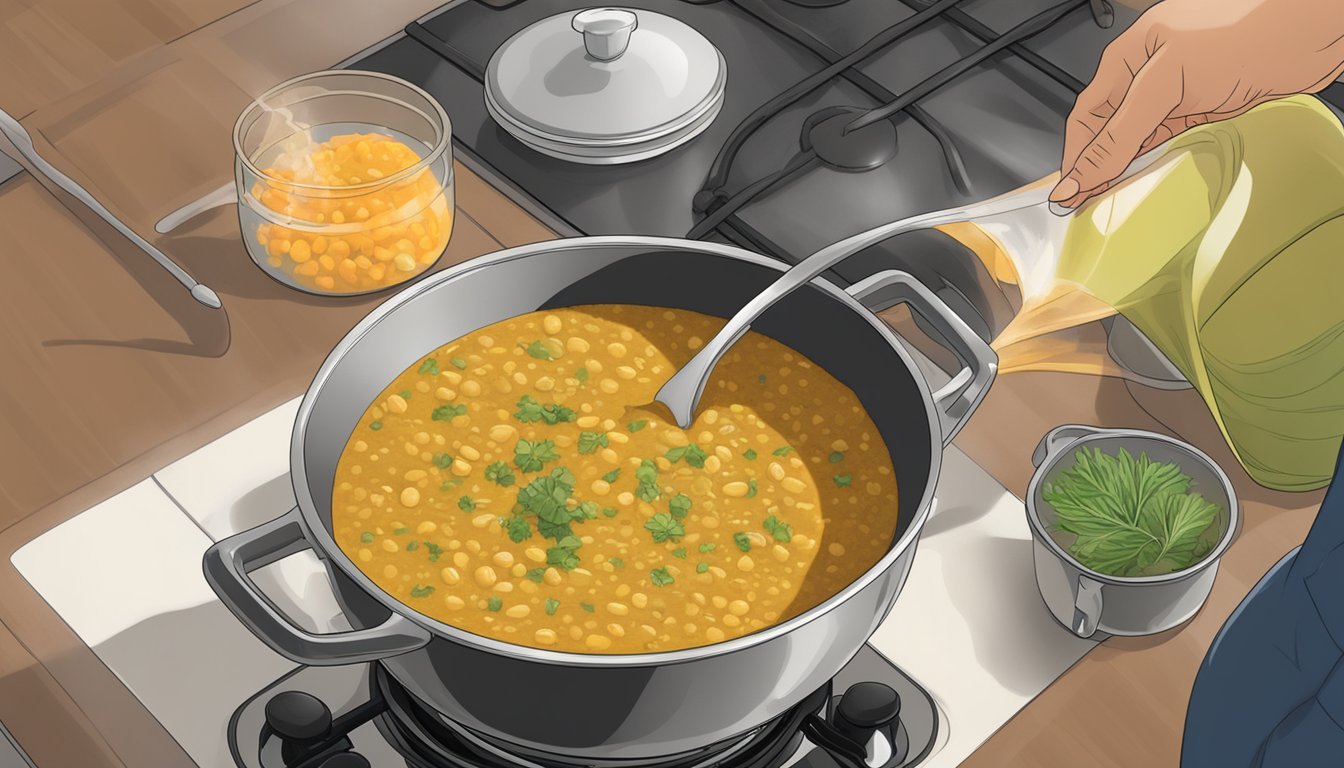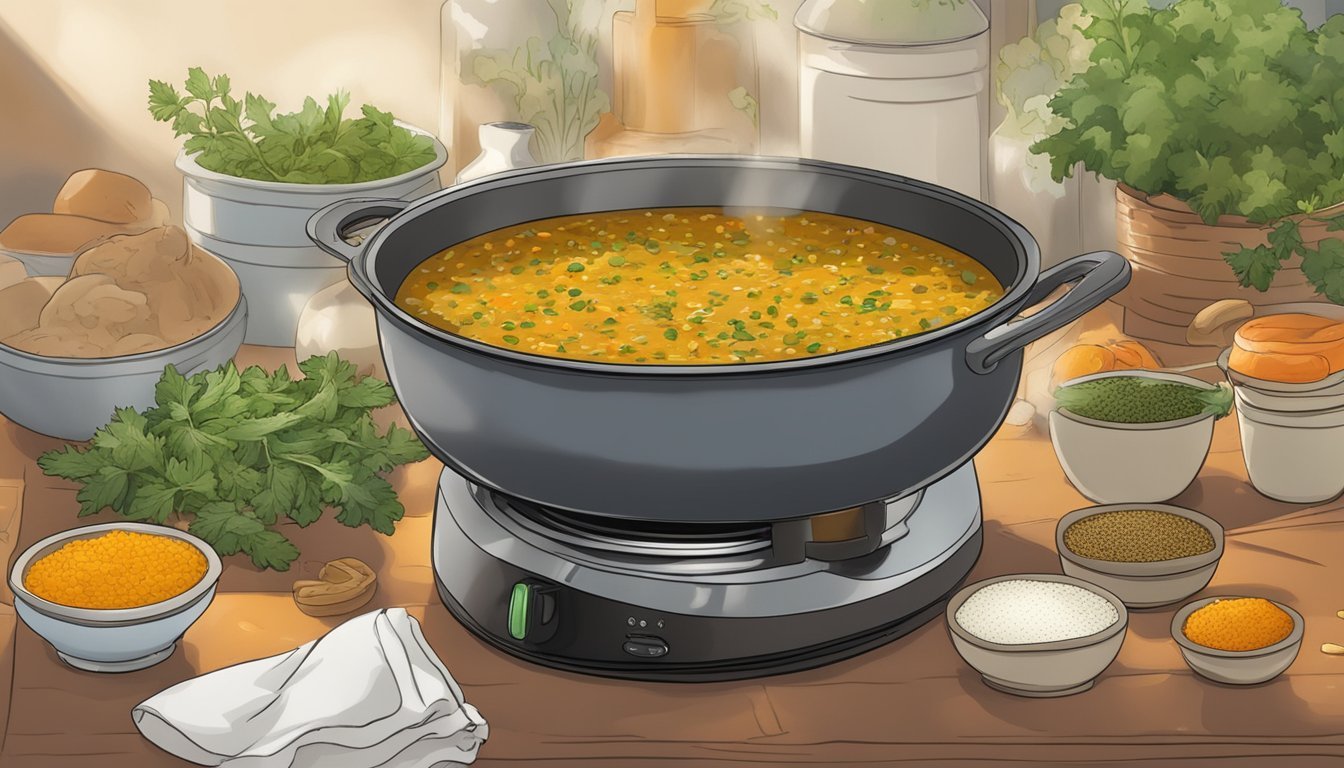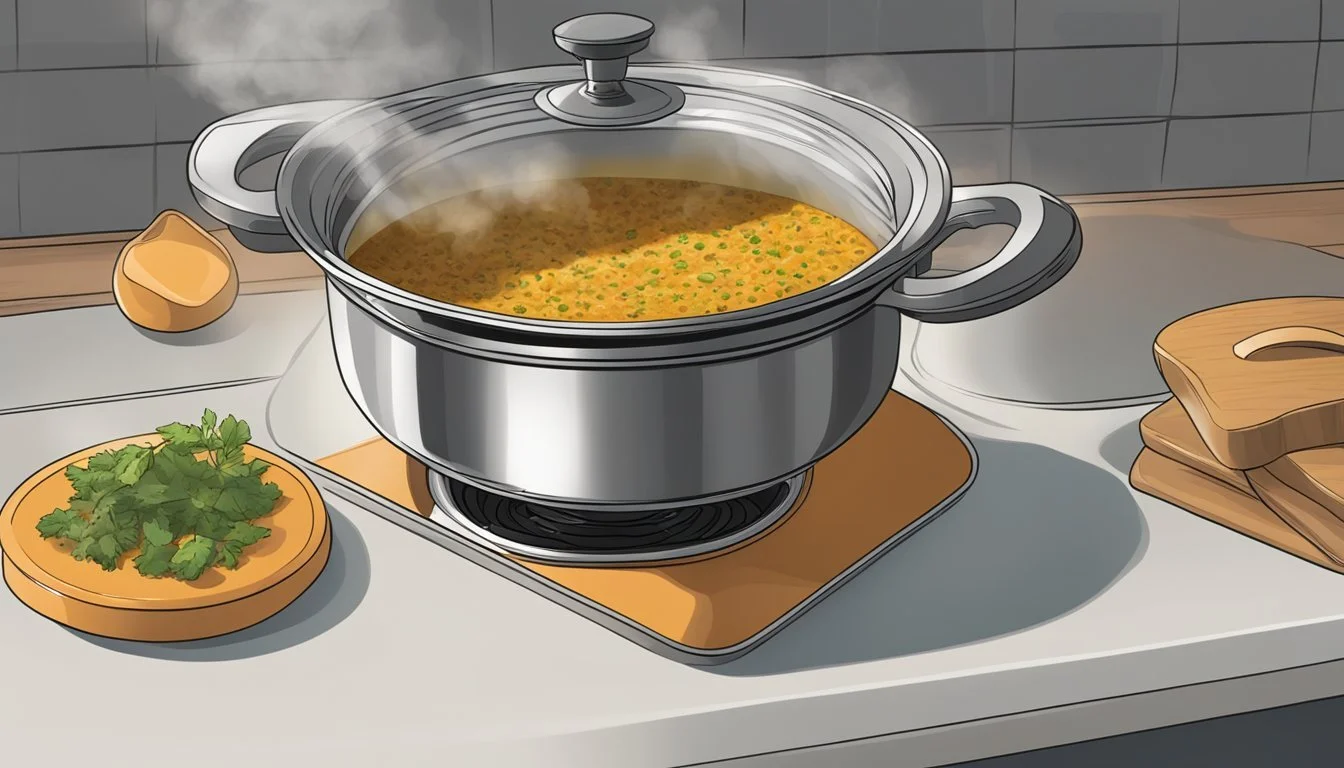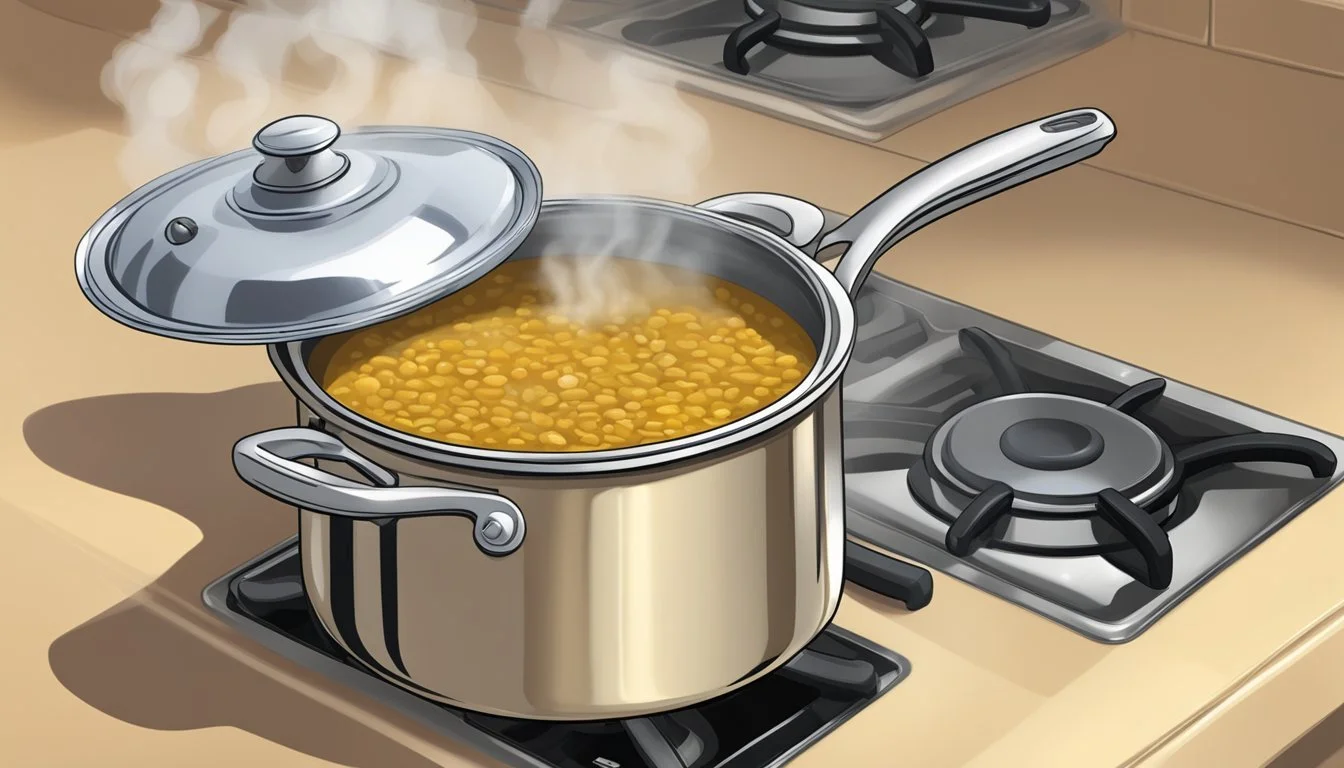Best Way to Reheat Curried Lentil Soup
Preserving Flavor and Quality
Curried lentil soup is a comforting and nourishing dish, loved for its warming spices and hearty legumes. When it comes to leftovers, one of the main challenges faced is how to reheat the soup to maintain its vibrant flavors and appealing consistency. Lentil soup's tendency to thicken as it stands is attributed to the starches in the lentils, which continue to absorb liquid when cooled. This natural process can turn a once perfectly spoonable soup into a dense stew when not reheated with care.
Achieving optimal reheating results requires a gentle approach that respects the delicate balance of spices and textures within curried lentil soup. Care should be taken to not only restore the soup to a pleasing temperature but also to preserve the integrity of its ingredients. For instance, exposure to excessive heat can dull the spices that give the soup its signature flavor, while aggressive reheating can compromise the lentils' tenderness.
By employing correct reheating techniques, one ensures that the curried lentil soup retains its comfort-inducing qualities. Attention to such details enables the reinvention of last night's meal into a culinary experience that's as gratifying as when the soup was first prepared, allowing the eater to savor its aromatic spices and savory depth once more.
Understanding Curried Lentil Soup
Curried Lentil Soup is a harmonious blend of nutrition and flavors. Typically vegetarian or vegan, it's a gluten-free option that appeals to a wide range of dietary preferences. The key components include lentils, which are a cornerstone for their high fiber, protein, iron, potassium, and calcium content.
Lentils: Both red and brown lentils are commonly used, with red lentils typically creating a smoother consistency. They're the soup's main source of protein and fiber.
Spices: Curry powder infuses the soup with its signature warm spice profile. The blend varies but usually includes turmeric, cumin, coriander, and chili.
Vegetables: A medley of vegetables like onions, garlic, ginger, and carrots bring depth and essential nutrients. Some variations also include potatoes, spinach, or kale for added texture and vitamins.
Liquids: Vegetable broth serves as the soup’s base, maintaining its vegan status, while coconut milk adds a creamy texture and a hint of sweetness.
Tomatoes: Diced tomatoes or tomato paste can be incorporated to introduce acidity and richness.
Heritage: Rooted in Mediterranean and South Asian cuisine, curried lentil soup has evolved into a global comfort food, adaptable to many culinary preferences.
This soup is known not only for its robust taste but also for its health benefits, being rich in essential nutrients while remaining gluten-free. Its versatility allows for additions like potatoes for heartiness or leafy greens for a nutrition boost, making lentil vegetable soup a satisfying meal that supports overall health.
In summary, curried lentil soup is a tasteful vessel for delivering nutrition through a blend of lentils, spices, and assorted vegetables, making it a cherished dish in many households.
Pre-Reheating Tips
Proper storage and preparation are critical to preserving the flavors of curried lentil soup before reheating. These steps ensure that the soup retains its taste and texture when served again.
Storage Best Practices
Refrigerator: To maintain the quality of curried lentil soup, it should be stored in the refrigerator within two hours of cooking. An ideal storage container is an airtight container that prevents moisture loss and keeps out other food odors. Food bloggers often suggest cooling the soup quickly in an ice bath before refrigerating to minimize the time bacteria have to develop.
Freezer: For longer storage, freezing is a suitable option. Lentil soup freezes well due to its hearty nature and can last in the freezer for 2-3 months. Use freezer-safe containers or bags, expel as much air as possible, and label them with the date of freezing. Defrosting should then be done in the refrigerator overnight, ensuring that the soup thaws evenly and safely.
Preparation for Reheating
Before reheating curried lentil soup, one must remember to defrost it properly if stored in the freezer. A thorough defrost inside the refrigerator is preferable to leaving it out at room temperature which can encourage bacterial growth.
If the soup was refrigerated, one might need to add a little water or broth before reheating to adjust the consistency. The soup tends to thicken upon cooling, hence stirring in a bit of liquid helps to restore its original texture. This step also prevents the soup from becoming overly thick during reheating.
For Instagram-worthy presentation, a food blogger might garnish with fresh herbs or a dollop of yogurt post-reheating, but this should never be done before storing or reheating as it can affect the storage life and reheating quality of the soup.
Reheating Methods
When reheating curried lentil soup, the goal is to restore it to its original, flavorful state without compromising its texture and consistency. Achieving this involves careful control of temperature and the reintroduction of liquids as necessary.
Stovetop Technique
For the stovetop technique, one should transfer the lentil soup to a saucepan and add a little broth or water to avoid thickening. Heating should be done over medium heat, with frequent stirring to ensure even heat distribution and to prevent sticking.
Microwave Method
The microwave method involves placing the lentil soup in a microwave-safe bowl. It's recommended to introduce a small amount of water or stock to maintain the soup's moisture level. Covering the bowl with a microwave-safe lid and heating in 30-second intervals, stirring each time, helps distribute heat evenly.
Instant Pot Strategy
To reheat curried lentil soup in an Instant Pot, one should put the soup along with some additional broth or water to keep the consistency right. The 'Sauté' function allows them to bring the soup to the desired temperature with stirring.
Dutch Oven Approach
Reheating in a Dutch oven entails adding the lentil soup and a dash of olive oil or water to replenish lost liquids. The Dutch oven should be placed over low to medium heat, and the soup should be slowly brought up to temperature, with occasional stirring to maintain even heating and prevent scorching.
Seasoning and Flavor Enhancement
When reheating curried lentil soup, it is essential to adjust the spices and incorporate fresh ingredients to retain and enhance the original flavors. Soup's seasoning can change during storage and reheating, demanding a careful rebalancing of spices and addition of fresh elements to ensure each bowl is as aromatic as when it was first prepared.
Adjusting Spices
After reheating the lentil soup, one may find that the intensity of spices like garam masala, cumin, and turmeric may have diminished. A cook should taste the soup and add small amounts of these spices back to the desired level. It's vital to adjust these seasonings gradually, as their potency can vary:
Garam Masala: Start with a pinch, mix thoroughly, and taste.
Cumin: Sprinkle lightly if the soup has lost its smokiness.
Turmeric: Add a dash to revive the golden hue and earthy tones.
One should also consider the heat level, adjusting with ground black pepper or cayenne as needed. When adjusting spices, remember:
Spice Quality to Enhance Garam masala Warmth and complex flavor Cumin Smokiness Turmeric Earthiness and color Black pepper Heat and sharpness
Incorporating Fresh Ingredients
Fresh ingredients can invigorate the soup with vibrant flavors and enhance its aroma. Before serving, consider garnishing with fresh parsley or cilantro for a burst of color and freshness. As for salt, one may use fine sea salt or kosher salt to brighten the soup’s taste, ensuring to sprinkle sparingly and taste as one goes:
Parsley: Chop finely and sprinkle over the soup for freshness.
Cilantro: Use liberally if it complements the soup's profile.
Drizzle with extra virgin olive oil for a rich and flavorful finish.
The garnishing process can profoundly affect the final taste, so it's important to use fresh herbs and oils judiciously to complement the soup’s existing flavors.
Serving and Presentation
When serving curried lentil soup, pay attention to the accompaniments and garnishes that can enhance the flavor profile and presentation. Portion control is equally important to ensure each guest receives a perfect balance of soup, garnishes, and sides.
Accompaniments and Garnishes
Curried lentil soup excels in both taste and presentation when paired with the right accompaniments. Consider serving it with rustic toasted bread for a hearty and satisfying meal, especially during fall and winter months when comfort is essential. For a nourishing touch, top the soup with baby spinach or chopped kale, which will gently wilt from the heat, adding a fresh contrast. A squeeze of lemon juice adds a bright note, while a sprinkle of red pepper flakes or coriander introduces a subtle warmth and complexity.
Rustic Toasted Bread: Offers a satisfying crunch.
Lemon Juice: Brightens the flavors.
Chopped Kale/Baby Spinach: Adds a nourishing element.
Red Pepper Flakes/Coriander: Brings warmth and depth.
Dishing and Portion Control
It's important to serve curried lentil soup in pre-warmed bowls to maintain its temperature. Use a ladle to serve the soup, ensuring each bowl receives a hearty portion of lentils and vegetables, like sweet potatoes or chard, if included in the recipe. Employing a consistent ladling technique helps control portions and guarantees that each serving is equal in both quantity and flavor, respecting the soup's comforting and nurturing essence.
Sweet Potatoes/Chard: Ensure these are evenly distributed.
Pre-Warmed Bowls: Keep the soup warm upon serving.
Ladle: Use for consistent portion sizes.
Navigating Common Reheating Challenges
Reheating curried lentil soup requires careful attention to maintain its robust flavor and pleasant consistency. Common hurdles include an imbalance of acidity, a shift in consistency, and separation of ingredients.
Acidity: Reheating can alter the delicate balance of spices and tanginess in curried lentil soup. One should taste the soup after reheating and, if necessary, adjust the acidity with a touch of lemon juice or vinegar.
Consistency: The soup may thicken when refrigerated. To regain the original consistency, they may gradually incorporate small amounts of broth while reheating. It’s important to add the broth in stages to avoid making the soup too thin.
Ingredients Separation: Components of the soup, including lentils and curry spices, can become divided and settled at the bottom. Stirring occasionally during the reheating process ensures an even distribution of ingredients and flavors.
When using a microwave, one should cover the soup with a microwave-safe lid or a damp paper towel to retain moisture. Reheat in short intervals, stirring between each, to avoid overheating or creating hot spots.
For stove-top reheating, use a saucepan over medium heat and continuously stir. This method allows for better control and prevents the soup from sticking to the bottom of the pan. One may also adjust the heat as needed to avoid boiling the soup, which can break down the flavors and affect the overall texture.
Utilizing these methods will help them overcome common challenges faced when reheating curried lentil soup, preserving its intricate flavor profile and inviting consistency.
Health Benefits and Dietary Considerations
When considering how to best reheat curried lentil soup, it's important to remember that the soup contains a variety of nutrients that are beneficial to health. This section provides information on the nutritional value of lentil soup and explores how dietary variations can be accommodated.
Nutritional Information
Lentil soup is a nutritious choice, offering a rich source of dietary fiber and protein. One cup of cooked lentils contains approximately:
Fiber: 15.6 grams
Protein: 17.9 grams
Iron: 6.6 milligrams
Potassium: 731 milligrams
Calcium: 38 milligrams
These nutrients contribute to digestive health, muscle function, and the transportation of oxygen in the blood. Lentils are an excellent food choice for those looking to increase their intake of heart-healthy fiber and plant-based protein.
Dietary Variations
Curried lentil soup can be adapted to suit a variety of dietary needs:
Vegan and vegetarian: Naturally vegan, this soup excludes meat, poultry, and fish, as well as any animal-derived products, fitting well into both vegan and vegetarian diets.
Gluten-free: By ensuring that any stock or added ingredients are gluten-free, this soup can be safe for those with gluten sensitivities or celiac disease.
Variations in ingredients: The soup can be modified to include additional nutrients or to omit certain ingredients based on dietary restrictions or preferences.
By being mindful of these dietary considerations, individuals can enjoy curried lentil soup while adhering to their health goals and dietary requirements.
Advanced Tips and Tricks
When reheating curried lentil soup, certain techniques can ensure the flavors remain as vibrant as when the soup was first prepared. These advanced tips and tricks delve into making the most out of leftover soup, elevating its taste with each reheating.
Making Use of Leftovers
Utilizing leftovers economically requires strategic reheating to maintain the soup's integrity. Curried lentil soup often contains robust spices like garam masala, cumin, and turmeric, which can continue to develop and deepen in flavor. Here's a strategy to effectively manage leftovers:
Store Properly: Divide the soup into portion-sized containers, ensuring quicker and more even reheating.
Gentle Reheat: Opt for a stovetop method, using medium heat to avoid overcooking the spices.
Enhancing Leftover Soup
Sometimes, reheating provides an opportunity to enhance the soup's flavors or tailor it to new preferences. Consider the following additions:
Spice Adjustment: Add a pinch of garam masala or red curry paste to refresh the spice profile.
Aromatic Oil: Drizzle a small amount of olive oil infused with cumin or turmeric for an aromatic boost.
Indian-Inspired Variations: Introduce new elements inspired by Indian cuisine, such as a teaspoon of mustard seeds or a few curry leaves during reheating to infuse new flavors.
By applying these techniques, one can ensure that each serving of curried lentil soup is as enjoyable and flavorful as the first.
Safety Considerations When Reheating
When reheating curried lentil soup, there are key safety measures that should be observed to ensure the soup's quality and prevent the growth of harmful bacteria. Soup should be reheated to reach an internal temperature of at least 165 degrees Fahrenheit to be considered safe for consumption. This temperature ensures that potential bacteria are killed. A food thermometer can be used to check that this temperature has been reached in the center of the soup.
Reheating on the Stove: It is often recommended to reheat curried lentil soup over medium heat. One should frequently stir the soup to ensure even heating and to maintain a consistent texture. Avoid boiling vigorously as this may impair the flavors and can lead to the lentils becoming mushy.
Reheating in the Microwave: If using a microwave, the soup should be placed in a microwave-safe bowl. Covering the bowl with a microwave-safe lid or a damp paper towel helps to keep moisture in and heat the soup evenly. Interruptions to stir the soup once or twice during the process are important for uniform heat distribution.
Storage Before Reheating: Curried lentil soup should be stored properly in the fridge or freezer in an airtight container. This helps maintain its consistency and flavor profile. Soup that has been left at room temperature for more than two hours should not be reheated, as it falls into the danger zone where bacteria can multiply rapidly.
By adhering to these safety measures, one can enjoy the rich flavors of curried lentil soup without risk.
Conclusion
Reheating curried lentil soup effectively retains its nourishing qualities and comforting flavors. To ensure even heating and to preserve the soup’s rich taste, one must gently reheat it on the stove over medium heat, stirring occasionally. This method facilitates a uniform temperature distribution and prevents the soup from thickening excessively or burning.
Using a mild heat setting is crucial. If the soup appears too thick, they may add water or broth until the desired consistency is reached. It's recommended to be attentive to the soup’s temperature; it should be warm enough to serve but not boiling vigorously, as this could impact the delicate spices in the curry.
When using a microwave, it's advisable to cover the soup and reheat in short intervals, stirring in between to ensure that every part of the soup reaches the optimal temperature without losing moisture.
In summary, whether it's stovetop or microwave, a careful approach will lead to a satisfying bowl of curried lentil soup. One that's warm, flavorsome, and provides both comfort and nourishment.

